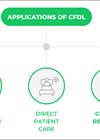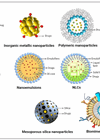The author considers recent progress and shares insights from leading practitioners in telemedicine applications and digital technology strategies.
Amidst COVID-19 and combined mitigation and suppression measures, hospitals and clinics have responded rapidly to strengthen telemedicine strategies and virtual healthcare services to replace routine care, both for patient follow-up, home monitoring and to forward triage and manage new patients prior to presenting to ophthalmology departments (Figure 1).

OCT, optical coherence tomography.
Adapted from: Li JO, et al. Prog Retin Eye Res 2020 Sep 5:100900.
Many hope that this enthusiasm for newer models of virtual care will generate a long-lasting transformation in acceptability and deployment of digital-based clinical care pathways.
While telemedicine can be offered through scheduled telephone calls or video visits, some ophthalmic subspecialties are more amenable to live telehealth visits than others, note New-York based authors Saleem and colleagues [1]. Video visits are particularly suitable for oculoplastics and glaucoma and may be useful in the assessment of macula function of selected diabetic retinopathy (DR) and age-related macular degeneration (AMD) patients. They suggest that retinal telehealth is best supported by store-and-forward (not real-time or ‘asynchronous’) models.
Teleophthalmology is an effective screening and management tool for a range of adult and paediatric acute and chronic ocular conditions [2]. It has been adopted mostly for screening of retinal conditions, such as retinopathy of prematurity, DR and AMD, in diagnosing anterior segment conditions and in managing glaucoma.
“With improvements in image processing, and better integration of the patient’s medical record, teleophthalmology should become a more accepted modality, all the more so in circumstances where social distancing is inflicted upon us,” wrote Sommer and Blumenthal [2]. Incorporation of artificial intelligence (AI) into remote virtual care models offers even further potential for wider and deeper deployment.
Harnessing established and emerging technologies
A recently-published global perspective on digital technology and AI in ophthalmology, authored by Li and colleagues, notes: “The rapid introduction of telemedicine and teleophthalmology during the pandemic has moved beyond the traditional model of connecting specialists with patients from remote and underserved regions. Instead it has the potential to become the new standard of care, in particular for triaging patients prior to their hospital attendance [3].” While such systems require evaluation to ensure patient safety, the authors predict that the paradigm shift in acceptability of telemedicine to both patients and doctors will be profound (Table 1).

Senior and corresponding author Dr Daniel Ting, Head, AI and Digital Innovation, Singapore National Eye Center and Assistant Professor, Duke-NUS Medical School, commented in a telephone interview: “The impact of COVID-19 on the global healthcare landscape has been profound, marked by increased public and staff exposure risks, increased waiting time, delay of treatment and deployment to the front lines. We believe that inter-related digital technologies – telemedicine and the internet of things, big data analytics, AI using deep learning and blockchain (to ensure data privacy and security) – can be used to remediate the COVID-19 outbreak.”
Yim et al., for example, showed that AI can detect what retina specialists can’t see in optical coherence tomography (OCT) scans, demonstrating the potential of using AI to predict disease progression to ‘wet’ AMD [4].
The Singapore national telemedicine-based DR screening programme, established in 2010, screens more than 100,000 people with diabetes across 18 primary eyecare clinics each year, with retinal photographs transmitted electronically to the reading centre and assessed by professional graders, returning same-day results to clinics, 100% within one hour.
AI-assisted triage could potentially reduce the need for professional reading centre graders, with clinicians providing overall supervision.
“For the past two years we have been working on integrating a deep learning AI system for referable DR, vision threatening DR and related eye diseases within the national DR screening programme, replacing primary screening with an AI platform,” explained Dr Ting. “That alone will potentially reduce current workload of human graders by more than 75%, representing a huge efficiency gain with an AI application as the primary screening tool, with human readers providing a secondary grading tool.”
Restrictions imposed during the COVID-19 crisis have created a huge backlog of patients that need to be seen by clinicians. “In the tertiary eye care setting, within the Singapore National Eye Service we are currently looking at how we can deploy an asynchronous imaging-based service for widescale patient follow-up,” said Dr Ting. “Using a store-and-forward imaging service from investigation clinics, with patients attending for fundus photography and OCT imaging, a typical clinic capacity could double to more than 40 cases per doctor session. This is how we can harness the power of virtual healthcare to deliver a new model of care to alleviate congestion and reduce backlogs in the healthcare setting.”
Embracing telemedicine to transform provision of care
Ms Dawn Sim, Consultant Ophthalmologist and Director of Telemedicine, Moorfields Eye Hospital, London, UK, discussed telemedicine strategies in a telephone interview. She explained: “Well before the COVID-19 pandemic, Moorfields embraced telemedicine as a means to change and enhance the way we provide care, and that has had a lasting effect. As a result, in response to the pandemic, we were well placed to rapidly implement many different telemedicine pathways, such as cloud-based optometrist referral refinement, video consultation clinics via the browser-based Attend Anywhere service and an oculoplastic video-based telemedicine consultation service, with prioritisation according to clinical need.”
A retrospective study of a cloud-based referral platform for assessment of optometric referrals identified 14% of patients that needed urgent treatment and that more than half of the Hospital Eye Service referrals were avoided after implementation [5].
A review of the Attend Anywhere service found that up to 57% of cases were being managed using digital consultations, the majority for minor symptoms and that 21.1% required onward referral to the A&E or a subspecialty service [6]. Onward referrals from the Attend Anywhere service are still around 20% of all cases, with over 20,000 case consultations carried out through October 2020.
Kang et al. described experience following rapid deployment of oculoplastic video-based telemedicine consultations. Clinicians found these particularly useful for follow-up and postoperative cases, and to more accurately triage and assess new referrals [7]. Video consultations were found to be less effective for new orbital patients requiring comprehensive assessment prior to provisional diagnosis.
Of 66 consecutive patients (91% follow-up reviews, 9% new referrals, video consultations replacing cancelled outpatient appointments) seen by two oculoplastic consultants and one fellow over a four-week period, 94% found it easy to join the consultation, 62% preferred video over face-to-face consultation (safer and more convenient) and, given a choice, more than 80% preferred video over telephone consultation. Kang and authors argued that, although the expansion of teleophthalmology is driven by crisis, “it is essential that we carry over successful developments into business-as-usual practices when normal service resumes.”
Digital exclusion applies to a large proportion of the population and alternative non-digital routes therefore need to be in place to ensure continuing access to care, observed Ms Sim. Others have emphasised the importance of patient involvement in healthcare when it comes to urgent e-health solutions for COVID-19, to secure compliance and adherence, but “most of all to integrate needs” [8].
Emerging home monitoring applications represent a ‘super-exciting field’, yet to be validated in clinical practice
Digital home monitoring devices and mobile medical software applications potentially offer practical tools for early detection and monitoring of retinal disease, as part of a modern integrated teleophthalmology service. These include: Food and Drug Administration (FDA)-approved ForeseeHome device (Notal Vision), a preferential hyperacuity perimetry test; myVisiontrack® (Vital Art and Science/Genentech), a shape discrimination hyperacuity test FDA approved for AMD and diabetic macular oedema (DMO) monitoring; and Alleye® (Oculocare Medical), FDA-approved and CE-marked for hyperacuity self-monitoring in patients with retinal diseases.
A retrospective review of dry AMD patients, covering participants in the ForeseeHome (FSH) device monitoring programme from November 2009 to September 2018, assessed the real-world performance of the self-operated home monitoring system for early detection of choroidal neovascularisation (CNV). Its usage, coupled with standard of care, demonstrated substantial benefit to patients, helping preserve an additional three lines of vision at the onset of CNV, as compared with standard-of-care alone, leading to better VA prognosis with current therapy [9]. The proportion of eyes retaining ≥20/40 vision at documented development of CNV was 80%, substantially better than real-world data from the American Academy of Ophthalmology IRIS Registry, which reportedly show VA of 20/80 at CNV event with only 33% of eyes maintaining VA ≥20/40.
Faes et al. argued that new integrated care systems, linking the home measurement systems to digitised processes of further care, offer potential for significantly higher efficiency [10].
Provided as a downloadable app on the user’s mobile or tablet, myVisiontrack is intended for detection and characterisation of central 3 degrees metamorphopsia in patients with maculopathy and as an aid in monitoring progression of disease factors causing metamorphopsia. Alleye is designed to detect and characterise central and paracentral metamorphopsia in risk groups and in patients with macular conditions including AMD, DMO and central retinal vein occlusion. Patients perform measurements on an integrated App on smartphones or tablets while doctors remotely assess the test results on a web application in their practice or clinic.
“These are emerging research technologies that have yet to be validated with robust data in real-world settings but represent a super-exciting field,” said Dr Ting. “Barriers and challenges include improving ease of use and overcoming scepticism about the applicability of these home monitoring devices.”
Both myVisiontrack and Alleye applications are being evaluated in pilot studies being conducted at Moorfields Eye Hospital. In the Alleye pilot, around 5000 home monitoring tests were completed in a four-month period during lockdown, involving patients with nAMD, DMO or cystoid macular oedema (CMO) from any cause where treatment was paused or extended due to COVID-19, explained Ms Sim. Preliminary analyses indicate that around 10% of patients participating in the pilot received a test alarm and around half agreed to attend for a clinic visit. Of these, more than two-thirds received treatment with intravitreal anti-VEGF injection therapy due to declining hyperacuity detected using the Alleye tool.
“Self-reported visual acuity is a poor barometer for worsening disease and a hyperacuity test provides an objective measure of visual function. We are still learning how best to embed these applications within our care pathways,” commented Ms Sim.
Enhancing the real world with augmented reality
The Oculenz (Ocutrx) headset is a novel augmented reality device specifically developed for patients with visual impairment or low vision, such as in macular degeneration. Initial results in 10 eyes of five patients with advanced AMD showed enhanced functional vision and improvement in facial recognition tasks [11]. Best-corrected visual acuity (BCVA) was initially 20/200 improving to 20/80 with Oculenz without magnification, with a letter-score improvement of 17 to 19.
A unique feature of the device is in-home patient monitoring, with the visual field test completed in five minutes. The device sends test results to the physician via secured cloud, including alerts if scotoma changes, indicating possible disease progression. This may reduce unnecessary doctor visits and increases essential visits that might otherwise have been missed. The device is anticipated to be available in early 2021.
A clinical device trial evaluating the SightPlus™ (GiveVision) electronic head-mounted low vision aid showed significant improvement in visual function in participants with low vision (n=60), with 98% gaining an average of 31 ETDRS letters [12].
Opportunity to personalise the management of neovascular AMD using daily home OCT imaging
Notal Home OCT is a patient self-operated device that takes cross-sectional images of central 10 degrees (3mm x 3mm) of the macula, generating 88 B-scans with dense 34µm spacing, the OCT images are uploaded to the cloud for automated analysis. Notal OCT Analyser (NOA) is an AI-based algorithm that was developed to detect and quantify retinal fluid and to follow these volume quantities over time in exudative AMD.
“Because of the unmet need, more exciting technologies will continue to be developed for application in real-world healthcare settings”
Dr Judy E Kim, Professor, Ophthalmology and Visual Sciences at Medical College of Wisconsin, US, recently presented performance data of a novel deep learning algorithm for automatic retinal fluid quantification in home OCT images [13]. She explained that at-home OCT diagnostic testing offers an opportunity for personalising nAMD management by providing inter-visit information and allowing for immediate detection of recurrence or progression.
The study, enrolling 355 eyes from 239 subjects, found that NOA deep learning AI algorithm for automatic fluid quantification of OCT images performed comparably to human readers. In addition, AI-based analysis of OCT images provided new insights into temporal retinal fluid dynamics – visualising fluid down to nano-litre volumes – and into new markers of disease activity (such as patterns of fluid distribution between intraretinal fluid and subretinal fluid and volume changes over time). Dr Kim said she believed the system has the potential to accurately monitor AMD disease activity in a patient self-operated home-use environment – which would be a paradigm shift in the management of patients with nAMD.
The information generated by tele-connected OCT in patients’ homes has the potential to support current and future retinal disease management in monitoring patterns, drug selection and dosing, as well as patient outcomes, said Dr Anat Loewenstein, Tel Aviv University, Israel, speaking at the EURETINA 2020 Virtual Congress. Clinical trial results analysing consecutive eyes with dry and wet AMD and VA ≥20/40 showed positive and negative percent agreement of 97% and 95%, respectively, for fluid identification in at least one of three consecutive Notal OCT V3.0 self-images compared to commercial in-office OCT assessment.
Long-lasting digital-based healthcare solutions?
While the pandemic crisis has compelled many ophthalmologists and other medical specialties to consider virtualising services, teleophthalmology applications may take on a more permanent role in the provision of eye care [1].
Karani et al. reported outcomes of a teleophthalmology initiative implemented during the COVID-19 pandemic at the Columbia University Irving Medical Center, analysing 143 consecutive teleophthalmology visits (96% by video) from a total of 386 during the first month of the crisis [14]. For the primary outcome of number of patients requiring in-office follow-up within one month, 13% of all telemedicine visits had to be seen within one month, most commonly for vision loss and vision change (Table 2). The service was effective in preventing unnecessary office visits for red / dry eye, eyelid issue and eye pain.

Results of initial experience implementing teleophthalmology in response to the COVID-19 pandemic show that it provides a viable alternative for timely delivery of patient care across different subspecialties in emergency situations. Among 206 adult tele-ophthalmology visits scheduled during the first four weeks of lockdown in a large tertiary care academic eye centre, 32.3% were completed by the retina service, 25.3% by glaucoma, 22.2% by oculoplastics, 13.6% by cornea, 5.6% by neuro-ophthalmology and 1% by comprehensive ophthalmology [15].
Asked whether current upscaling of telemedicine services will generate long-lasting digital-based healthcare solutions, Dr Ting replied: “This is a unique opportunity. The worldwide transformation forced people to start adopting these digital technologies. Because of the unmet need, more exciting technologies will continue to be developed for application in real-world healthcare settings. I feel that there will be a long-lasting impact over the next few decades, with the perceptions of patients, funders, regulators and physicians shifting during this crisis. Nonetheless, the long-term impact of these newer digital technologies on outcomes needs to be assessed and validated.”
References
1. Saleem SM, Pasquale LR, Sidoti PA, Tsai JC. Virtual Ophthalmology: Telemedicine in a COVID-19 Era. Am J Ophthalmol 2020;216:237-42.
2. Sommer AC, Blumenthal EZ. Telemedicine in ophthalmology in view of the emerging COVID-19 outbreak. Graefes Arch Clin Exp Ophthalmol 2020 Aug 19; Epub ahead of print.
3. Li JO, Liu H, Ting DSJ, et al. Digital technology, tele-medicine and artificial intelligence in ophthalmology: A global perspective. Prog Retin Eye Res 2020 Sep 6; Epub ahead of print.
4. Yim J, Chopra R, Spitz T, et al. Predicting conversion to wet age-related macular degeneration using deep learning. Nat Med 2020;26(6):892-9.
5. Kern C, Fu DJ, Kortuem K, et al. Implementation of a cloud-based referral platform in ophthalmology: making telemedicine services a reality in eye care. Br J Ophthalmol 2020;104(3):312-7.
6. Wickham L, Hay G, Hamilton R, et al. The impact of COVID policies on acute ophthalmology services-experiences from Moorfields Eye Hospital NHS Foundation Trust. Eye (Lond) 2020;34(7):1189-92.
7. Kang S, Thomas PBM, Sim DA, et al. Oculoplastic video-based telemedicine consultations: Covid-19 and beyond. Eye (Lond) 2020;34(7):1193-5.
8. Pappot N, Taarnhøj GA, Pappot H. Telemedicine and e-health solutions for COVID-19: patients’ perspective. Telemed J E Health 2020;26(7):847-9.
9. Ho AC. Real-world performance of a self-operated home monitoring system for early detection of choroidal neovascularization in AMD (ForeseeHomeDevice). Presentation at the American Society of Retina Specialists Virtual Annual Scientific Meeting 2020.
10. Faes L, Bachmann LM, Sim DA. Home monitoring as a useful extension of modern tele-ophthalmology. Eye (Lond) 2020;34(11):1950-3.
11. Lam LA. Augmented reality device Oculenz-role in Improving functional vision in patients with age-related macular degeneration. Presentation at the American Society of Retina Specialists Virtual Annual Scientific Meeting 2020.
12. Crossland MD, Starke SD, Imielski P, et al. Benefit of an electronic head-mounted low vision aid. Ophthalmic Physiol Opt 2019;39(6):422-31.
13. Kim JE. Performance of a novel deep learning algorithm for automatic retinal fluid quantification in home OCT images. Presentation at the American Society of Retina Specialists (ASRS) Virtual Annual Scientific Meeting 2020.
14. Karani RY, Owda A, De Moraes G, et al. Tele-ophthalmology patient outcomes during the COVID-19 pandemic at a large tertiary care center in New York City. Scientific poster presented at the American Academy of Ophthalmology (AAO) virtual annual meeting 2020.
15. Grewal DS, Gupta D. Implementation of tele-ophthalmology using existing infrastructure in response to the COVID-19 pandemic. Scientific poster presented at the American Academy of Ophthalmology (AAO) virtual annual meeting 2020.
COMMENTS ARE WELCOME








